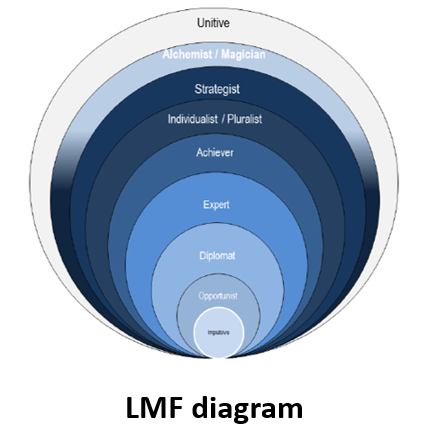Parent or Partner? The deep reason behind getting KPIs to work
Prefer to watch on video? Click here – 5 minutes, with captions.
‘We need to get KPIs sorted’ is a common refrain, which carries with it the assumption that it is the lack of these things that is constraining performance.
Unfortunately or fortunately…there’s deeper stuff going on that we need to be aware of if we want this sort of thing to work. And if we’re not aware of it, sorting the KPIs will actually make things worse!
You’d know from your own experience that when the next initiative is introduced, including KPIs, the sensible response is to smile politely until it blows over, then get back to work. This is a deep issue of ownership, and to understand it, we need to go deeper into working relationships. And for this, we’ll use the work of Peter Block.


Parenting and Partnering
Peter Block speaks of the difference between Parenting and Partnering. When we talk about a parental relationship, we are talking about one of Dominance and Dependence. Now, when you think ‘dominance’, your mind probably goes to an overbearing, perhaps physically big, intimidating character. But there’s another type of dominance, the type that’s about caretaking, about generating loyalty, about “stick with me and you’ll be OK”.
Why is the loyalty stuff also dominance? Because either way, you’re controlling another person. Setting things up so they will do what you want them to do. Which is great when it’s about stopping your kid running onto the road. And might be fine in the workplace…until you want people to take ownership or accountability. Then we hit a snag.
(And by the way, I’ve done the caretaking thing myself. It feels great, you get to swoop in, be the saviour, you achieve popularity, and you get a great turnaround in your staff survey results. But what you leave behind is a group of people not necessarily any better at taking ownership of themselves and the work than they were before you. And it’s exhausting!)
Key points – must read!
Before your mind starts saying “that’s it, no more parenting from me”, there are two key points:
- Stopping caretaking does not mean you stop caring. Caretaking means protecting from reality, like parents don’t show the whole truth of the world to their 4-year old. Caring means tending to the needs of your fellow human beings. Which is what you do if you’re in a managerial role, not because you’re the manager….but because you’re a decent human.
- There are times and contexts when the dominant role is entirely appropriate. Like, say, if a worldwide pandemic hit and people needed some source of “truth” to make sense of what to do next. Even for simple decisions like “should I work from home”, some “Don’t worry, I’ve got us covered” might be what’s needed to get people through without them cracking.
Where does the dominant and dependent thing come from?
The dominant and dependent relationship has great attraction for everyone involved. The dominant role provides a sense of control – one way or the other, the uncertainties that exist in working with any number of us humans are reduced the more control can be exerted. And for those on the dependent side, there is sweet relief when accountability is squarely held in the hands of someone else. Because life is hard enough right!
What’s going on here is all parties are avoiding anxiousness. Discomfort. The same reason my cat jumps off the kitchen bench when I squirt him with the spray bottle. It’s the anxiousness of being blamed for things not happening the way someone else wanted them to be. And this will see both sides accidentally collude to continue the dominant-dependent relationship at the same time they complain about it!
Yep, us humans are pretty interesting!
(By the way, I use ‘anxiousness’ rather than ‘anxiety’ to draw a distinction between discomfort and clinical anxiety which impacts all life. The two connect…but are also not the same)
KPIs anyone?
So now let’s set some KPIs into this relationship. The dominant part of the relationship sees this as a way to exert more control to see the results they want to see happen, and the dependent part will, unless the KPIs are viewed as easily achievable, employ various tactics to render the KPIs invalid or ineffective. The dominant side will then either brute force them in, or attempt to negotiate them to keep people happy…and the dominance-dependence dance goes on until it just goes away.
The alternative – Partnering.
An alternative is to adopt a mindset of Partnering. Note – mindset. You’re still in your employment relationship, and the reality is that the managerial role (whatever modern name you are giving it) has the formal authority to decide things like what work, and whether people are doing it well. But there’s nothing in this employment relationship that says it needs to occur as one of a parent looking after children.
So the leap which Peter Block points out is for managers to, when considering their team of direct reports, simply ask
“how would I go about this if we were all partners in business together?”.
It’s a powerful question.
And let’s add on another nuance to give respect to the managerial system you’re probably in. As you consider everyone to be a partner in the business of whatever your team does, consider the manager to have a 51% share.

What would Partnership mean?
The partnership part means the manager would share information about the business because all members of the team are considered to be owners as well. They have a right to know. Financial results. Customer information. Feedback received from anywhere outside the team, be it customers, suppliers….anyone. Future plans. Possibilities.
Think of a restaurant. If two new partners came on board, they would be walked through:
- The point of the restaurant (Purpose!)
- The market the restaurant plays in and who it serves (Strategy!)
- The actual food the restaurant serves and how (Operations!)
- The vibe the restaurant looks to create (Culture!)
- What each of the partners contributes (Roles!)
(See – all of the usual stuff, without the white noise that makes it useless)
Then, at the end of each night’s service, the team might sit down and go through results such as revenue, number of diners, any feedback received. Once per week they might discuss potential new items or ways to change things (improvement!), perhaps even a change of direction (innovation!).

The difference is that the manager no longer sits alone perusing the information, then emerges either with a smile or a frown before issuing the next set of directives. It’s a group of people sitting around together to discuss their business.
And what about things that are not traditionally communicated? A potential merger or acquisition for example? We can apply the same thinking. As the 51% owner, is this the sort of thing that I want to let the other partners know about?
The point is not the answer. It’s the question.
So why doesn’t this happen?
The manager relieved of the sole responsibility of running the show, and the employees being able to have ownership of their own future. Sounds great! So why doesn’t it happen?
For the same reasons mentioned earlier – dominance and dependence. These factors create huge resistance, and often for good reason.
Asking someone to let go of control, particularly if they have risen to their current managerial role through their expertise in creating dependent relationships (even the friendly / loyal ones) is going to causes waves of anxiousness. Which will fuel various excellent arguments against doing so.
And asking people who have spent years in the safety of not having accountability beyond their own direct role to step into anxiousness, when the rewards for doing so are long-term (taking charge of one’s own life) and in the short-term will cause significant discomfort (I might fail at this) is not going to cause shouts of joy.
This means there is serious emotional work required of all parties to move out of parenting and into partnering. And don’t make the mistake of seeing the dependent part of the relationship as the group that has the greater amount of work to do.
How do we do the emotional work?
The rewards of a partnering relationship are significant, not just for business results, but for the changes it can also bring on outside of work. I use a model called the Leadership Maturity Framework which provides significant insight into the way an individual makes meaning of the world depending on their current and future stages of adult development.

Whatever way you approach it, what’s needed is understanding and empathy that fully respects each individual’s own path as they make the move away from parenting toward partnering, as well as allowing them to support themselves and each other as they go through.
Fundamentally, it’s crucial to not underestimate the emotional work required, and to ensure human connection is not lost. It’s not fair to turn up the lights of accountability suddenly and without warning, and doing so, particularly in the current time, can cause damage.
And can also create a new way of working that sees a group truly take charge of their own destiny.
Back to the KPIs
Moving into a partnering relationship changes the very nature of the KPIs. They are no longer what I call an Accountability Hammer designed to force people into doing a job, which will then naturally be gamed so people can be OK. They instead become the agreed-upon way that a group keeps track of whether they are doing what they intended to do. Like an artist looking at plays on Spotify, they become valuable information that is used to ultimately make a better product.
Which is what we all wanted in the first place!
That’s all for this week.
If you have a colleague who would find this interesting, why not Forward this now?
And if you’d like to have a half an hour conversation with how these ideas might be applied in your organisation, just Reply to this email and my assistant will arrange a time.
